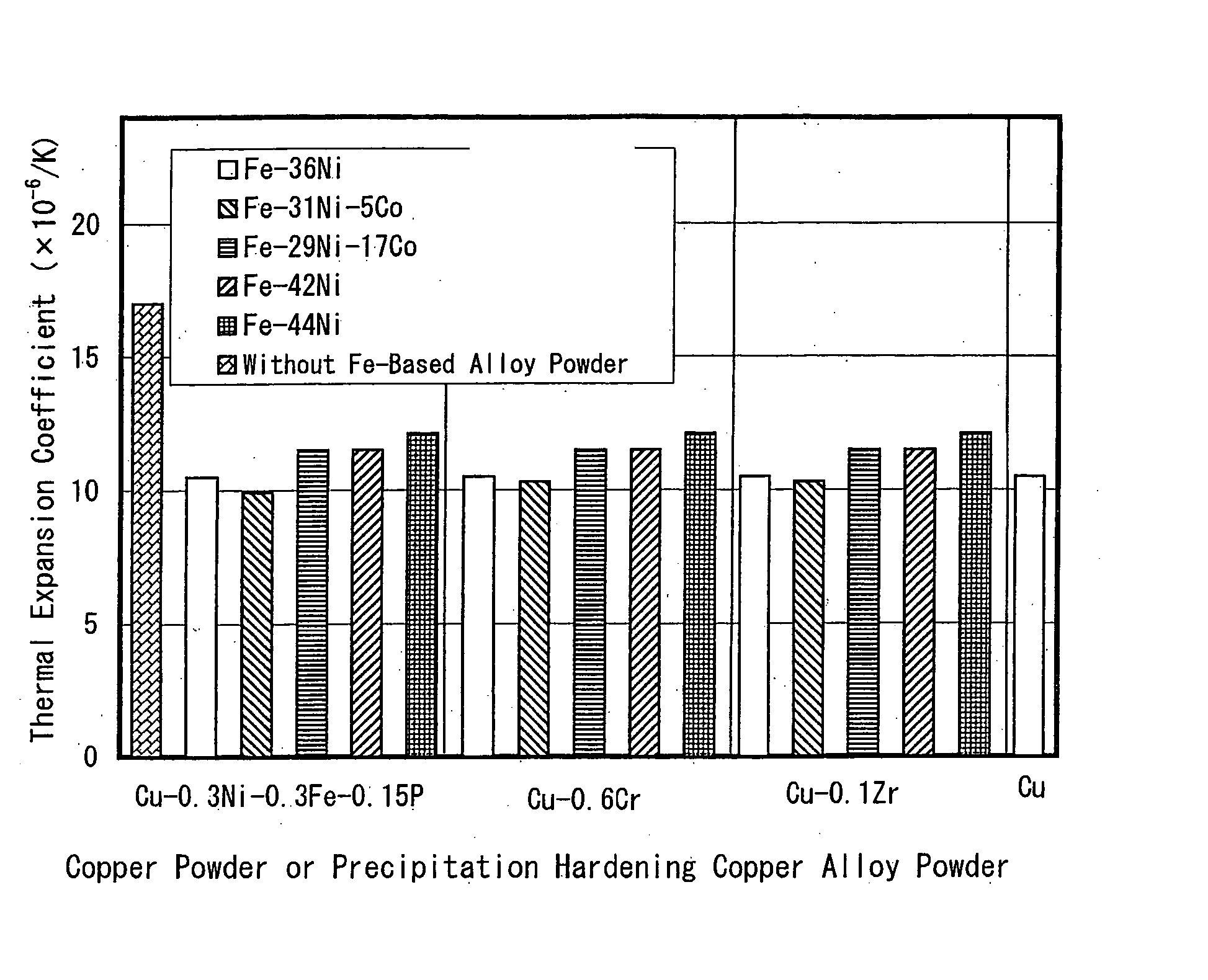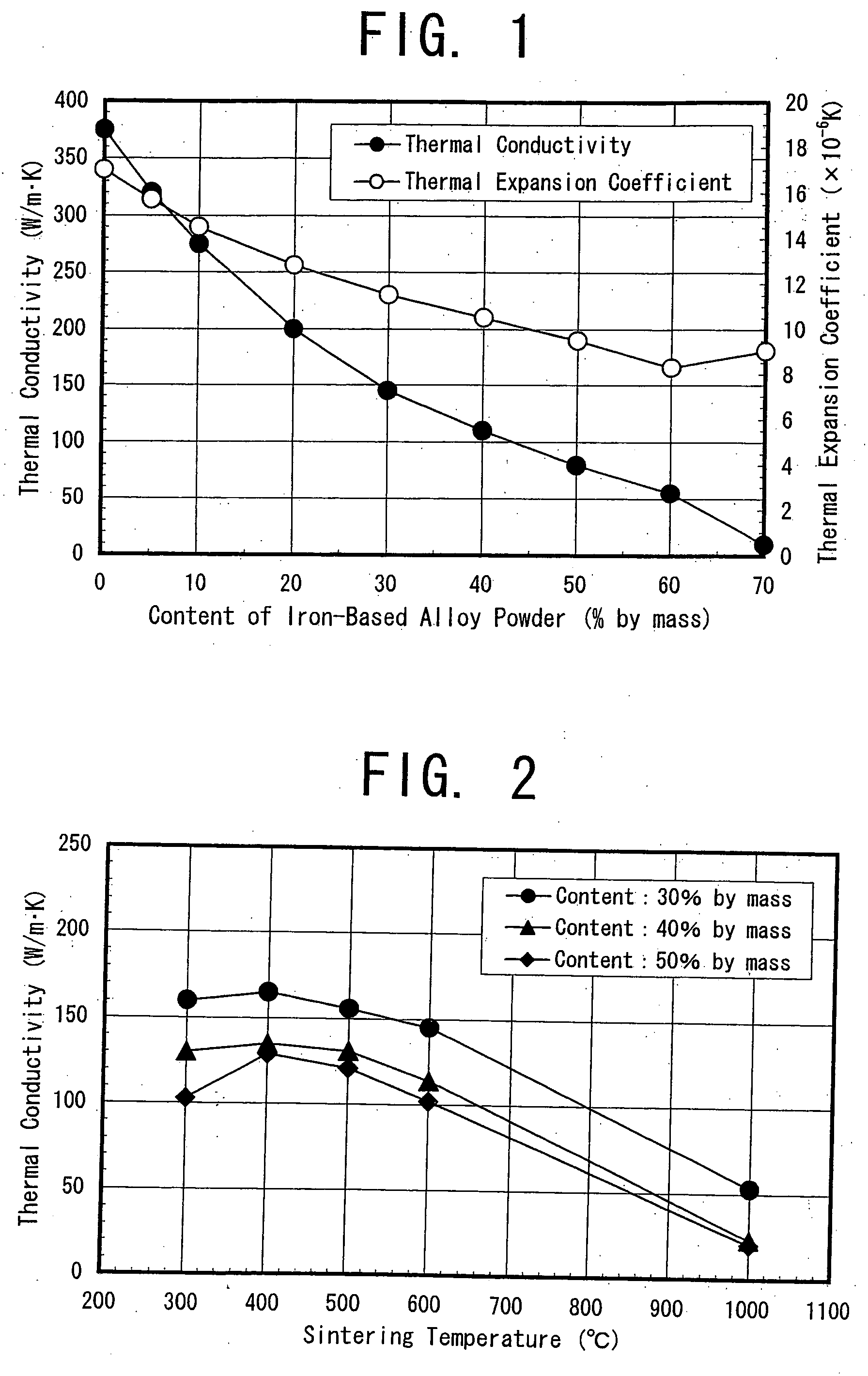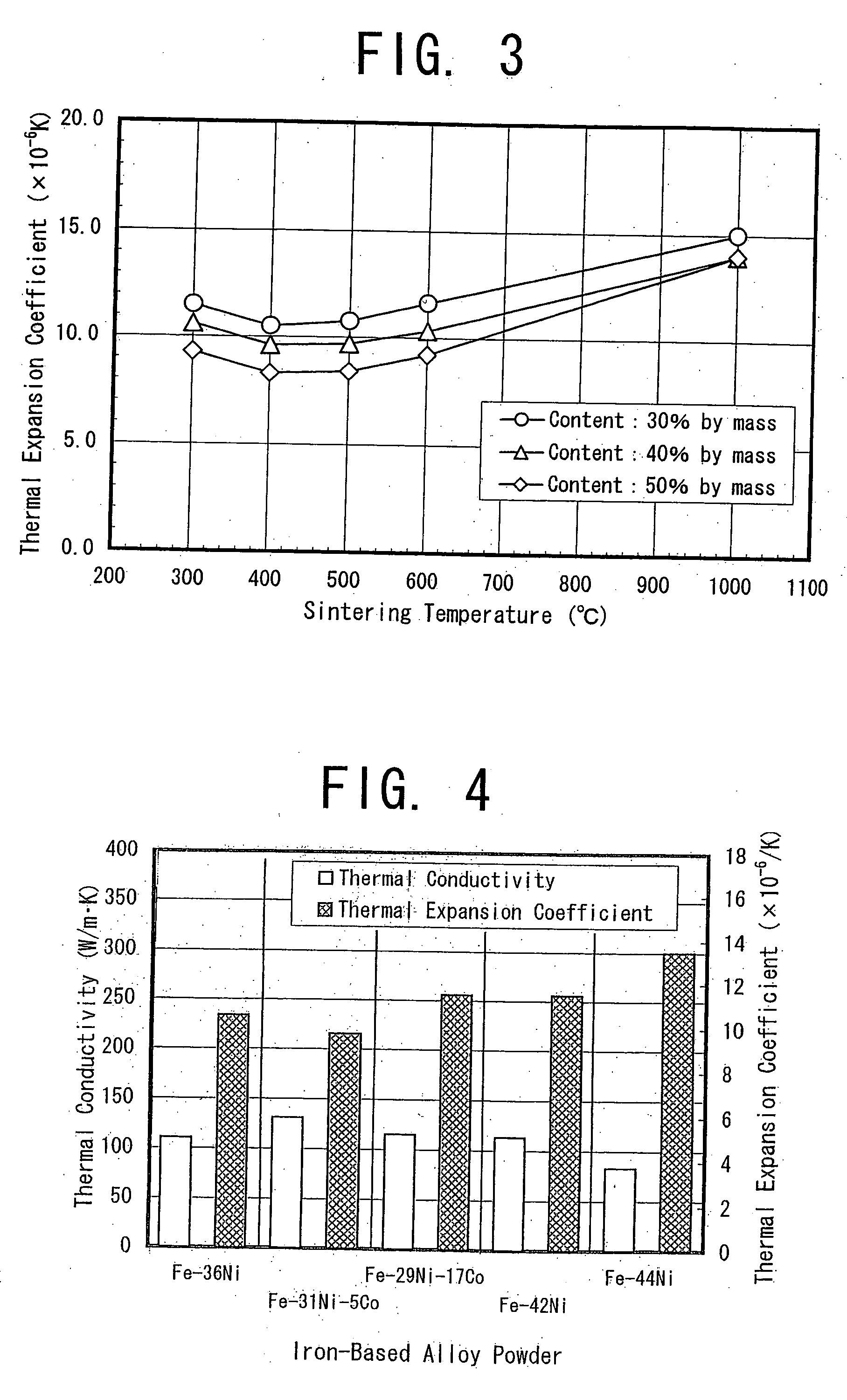Copper based material of law thermal expansion and high thermal conductivity and method for producing the same
a technology of law thermal expansion and high thermal conductivity, which is applied in the direction of basic electric elements, solid-state devices, transportation and packaging, etc., can solve the problems of high material cost, poor machinability of materials, and prone to deformation of gazette 1, etc., and achieves high thermal conductivity, excellent properties, and low thermal expansion.
- Summary
- Abstract
- Description
- Claims
- Application Information
AI Technical Summary
Benefits of technology
Problems solved by technology
Method used
Image
Examples
example 1
[0064] As shown in the following Table 1, iron-based alloy powders having a particle size of smaller than 100 mesh and the respective values in thermal expansion coefficients as measured below 100.degree. C. were prepared, in which the content of the powder having the particle size of 50 .mu.m or more was 40%.
1 TABLE 1 Powder Composition Thermal Expansion Coefficient % by mass .times.10.sup.-6 / K Fe-36Ni 1.2 Fe-31NI-5Co 0.0 Fe-29Ni-17Co 5.3 Fe-42Ni 4.2 Fe-44Ni 6.0
[0065] Copper powder having a particle size of-smaller than 100 mesh and containing 40% of powder of 50 .mu.m or more in particle size was prepared. The above-mentioned iron-based alloy powders were added to the copper powders in ratios as shown in Table 2. The powder mixtures were subjected to compacting under a pressure of 1470 MPa to obtain green compacts and they were sintered in an atmosphere of dissociated ammonia gas at temperatures as shown in Table 2 to obtain samples of 1-01 to 1-31. Thermal conductivities and ther...
example 2
[0071] Mixtures of copper powder having a particle size of smaller than 100 mesh and iron-based alloy powder of Fe-36Ni having a particle size of smaller than 100 mesh were subjected to compacting under a pressure of 1470 MPa. The compositions containing several quantities of powder materials in the designated particles sizes are shown in the following Table 3 as Samples of 1-06 and 1-32 to 1-39, in which the mixing ratios of the respective samples were the same as the mixing ratio of Sample 1-06 in Example 1, i.e., 60% by mass of pure copper powder and 40% by mass of iron-based alloy powder. The obtained green compacts were sintered at 500.degree. C. in the atmosphere of dissociated ammonia gas. The thermal conductivities and the thermal expansion coefficients of these samples were measured, the results of which are also shown in Table 3.
3TABLE 3 Fe-36Ni Cu Qty. of Thermal Qty. of Powder Powder of 50 Thermal Expansion Sample of 50 .mu.m or Less .mu.m or More in Conductivity Coeffic...
example 3
[0075] Several precipitation hardening copper alloy powders of smaller than 100 mesh containing 70% of 50 .mu.m or more in particle size were prepared as shown in Tables 4 and 6. Meanwhile, pure copper powders of smaller than 100 mesh containing 40% of 50 .mu.m or more in particle size were also prepared. Then the iron-based alloy powders shown in Table 1 were mixed with the prepared precipitation hardening copper alloy powders and the prepared copper powders in the ratios as shown in Tables 4 and 6. The powder mixtures were then subjected to compacting under the pressure of 1470 MPa and the obtained green compacts were sintered in the atmosphere of dissociated ammonia gas at temperatures as shown in Tables 5 and 7, to obtain Samples 2-01 to 2-37. Concerning each of these samples, the thermal conductivity, thermal expansion coefficient and hardness were measured, the results of which are also shown in Tables 5 and 7.
4 TABLE 4 Mixing Ratio, % by mass Precipitation Precipitation Harde...
PUM
| Property | Measurement | Unit |
|---|---|---|
| temperature | aaaaa | aaaaa |
| particle size | aaaaa | aaaaa |
| temperatures | aaaaa | aaaaa |
Abstract
Description
Claims
Application Information
 Login to View More
Login to View More - R&D
- Intellectual Property
- Life Sciences
- Materials
- Tech Scout
- Unparalleled Data Quality
- Higher Quality Content
- 60% Fewer Hallucinations
Browse by: Latest US Patents, China's latest patents, Technical Efficacy Thesaurus, Application Domain, Technology Topic, Popular Technical Reports.
© 2025 PatSnap. All rights reserved.Legal|Privacy policy|Modern Slavery Act Transparency Statement|Sitemap|About US| Contact US: help@patsnap.com



